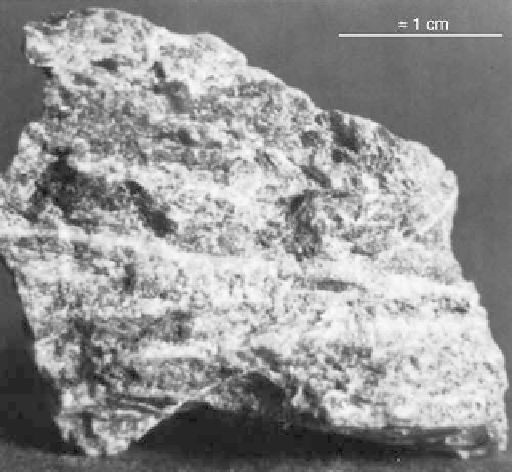Environmental Engineering Reference
In-Depth Information
PLATE 5.26
(Color Plate 5.26
follows
page 396.)
QUARTZITE (Bahia, Brazil).
PLATE 5.27
(Color Plate 5.27
follows
page 396.)
SERPENTINITE (Cardiff, Maryland).
Decomposed Rock
Decomposition from weathering causes rock to become more permeable, more compress-
ible, and weaker. As the degree of decomposition advances, affecting the intact blocks and
the discontinuities, the properties approach those of soils. The final product and its thick-
ness are closely related to the mineral composition of the parent rock, the climate, and
other environmental factors (see
Section 6.7).
Nonintact Rock
Discontinuities
or defects, representing weakness planes in the mass, control the engi-
neering properties by dividing the mass into blocks separated by fractures such as faults,
joints, foliations, cleavage, bedding, and slickensides, as described in
Table 5.17.
Joints are
the most common defects in rock masses. They have the physical properties of spacing,
width of opening, configuration, and surface roughness. They can be tight, open, or filled
with some material, and can display the strength parameters of cohesion and friction
along their surfaces (see
Section 6.4.4).




